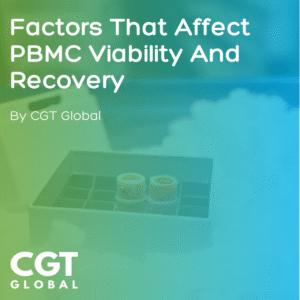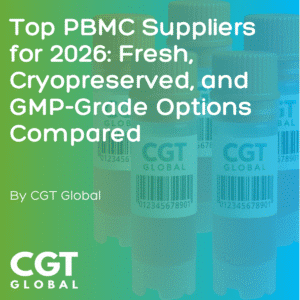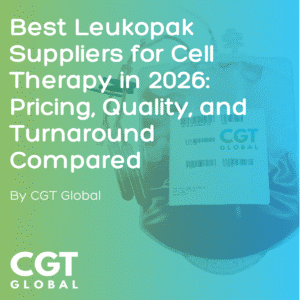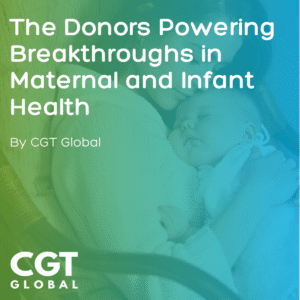Cell Therapy Research: Past, Present, and Future
By Joanna Wirkus
The drive to understand the origins of disease has led us to investigate the basic unit of life, the cell. Historically, it was thought that demons, spells, or ‘bad air’ caused illness. Over three and a half centuries, science has advanced to better understand how cellular biology can be leveraged to treat disease. Now, modern medicine is revolutionizing the field of “Cell Therapy”. With cell therapy, biotechnologists can isolate healthy cells to replace diseased ones and address serious health problems.
Cell therapy research: where we’ve been
A notable pioneer in the field of cell therapy is Nobel laureate Dr. Edward Donnell Thomas. While the first bone marrow transplants between people failed, the first transplant between twins was successful. When he started developing this treatment for blood cancers in the late 1950’s, it was not known that stem cells were being transplanted within the marrow. These early transplants set the foundation for how cells could be used to mitigate disease. Today, over 75 different conditions can be treated with hematopoietic stem cell transplantation, and it is estimated that over 60,000 are performed annually worldwide. The lessons learned have led to the development of revolutionary CAR-T cell therapy where T cells are engineered in the lab to kill cancer cells.
Cell therapy: challenges we face today
Unlike traditional medicines, cell therapies respond to their environment. They repair, replace, and regenerate cells and tissues to provide permanent treatments. There are thousands of clinical trials evaluating the potential for cell therapies to address conditions including cancer, autoimmune and neurodegenerative diseases.
Cell therapy holds incredible promise to restore human health. However, innovators paving the way toward new treatments face many challenges:
- Recruiting donors for allogeneic cell therapy: The careful sourcing of human cells is critical for the success of cell therapies. Screening donors is essential for any clinical trial and downstream commercialized treatment. This donor recruitment process is time consuming, which can slow the pace of research.
- High-tech manufacturing: State-of-the-art equipment and expert staff are needed to produce safe cell-based products. These core facilities are not available everywhere.
- Patient access and cost: Many resources are required to produce effective and safe cell therapies, leading to high costs, even at scale. For example, a CAR-T therapy to cure blood cancer can cost over one million dollars for a single life-saving treatment.
- Hospital bottlenecks: Regionalized cell therapy access is a critical issue in healthcare. Pharmaceutical companies need to guarantee the infrastructure to deliver therapies is up to the highest standard and many hospitals lack the staff, space, and resources to offer these treatments. This hinders patient access and slows the scalability of cell therapies.
Cell therapy research innovation: propelling the field forward
Here’s how CGT Global and their research collaborators work together to accelerate cell therapy innovations by addressing these challenges.
- Rapid donor recruitment: After a decade and a half of collecting cells, we can rapidly recruit unique donors with our pool of thousands of recallable donors, complete with detailed donor characteristics.
- Strategic facility location: Our coast-to-coast Stem Cell Collection Clinics are co-located with custom, state-of-the-art cell manufacturing laboratories. These specialized facilities allow us to collect and isolate and multiply primary cells efficiently which, when combined with rapid recruitment, translates into an expedited research timeline.
- Cutting-edge labs: While cells are our specialty, our high-tech tools and experienced team also validate machines and develop new assays. Dedicated and highly trained technicians ensure high-quality and scalable cells every time. Outsourcing these tasks to us prevents staffing-related delays and guarantees consistent results.
- Global research network: Many hospitals, clinics, and research institutions worldwide have joined CGT Global’s preeminent network. Rapidly distributing biospecimens within this network facilitates real-time data sharing and expedites clinical trials.
- Regionalized Therapy: For cell therapy to scale, a regional, patient-centric supply chain is required. CGT Global is rapidly developing centers that can both collect starting materials from donors and patients, store and/or manufacture cell therapies, and then deliver those therapies at regional clinics and hospitals.
What’s next for Cell Therapy?
Considering the cellular origins of disease, the future of cell therapy holds enumerable opportunities to improve human health. Curative applications will continue to evolve exponentially due to advances in artificial intelligence, gene editing, and biomaterials. Considering the importance of these new developments, we are committed to expanding patient access by lowering costs and shortening timelines by eliminating inefficiencies and streamlining logistics to advance equitable commercialization of cell therapy.
Together we can shape the future of cellular medicine
Are you committed to developing safe and effective cell-based therapy? We are too. CGT Global has 15 years of experience in delivering end-to-end solutions for cell research, therapy manufacture, and local patient delivery. By partnering with trusted collaborators and leveraging our strengths, we will expedite the development of new treatments for people with life-threatening conditions together. Many people stand to benefit from these life-saving cell-based therapies. For people with life-limiting conditions, every day counts.
If you’re a researcher, clinician, or organization looking to advance cell therapy research, we invite you to visit us at www.cgt.global/cell-therapy-research or contact us at 530-303-3828. Let’s work together to change lives for the better.
Sources
History of Cell Biology: Timeline of Important Discoveries
Remembering E. Donnall Thomas | Fred Hutchinson Cancer Center
Why Bone Marrow or Blood Stem Cell Transplants are Needed | NMDP







